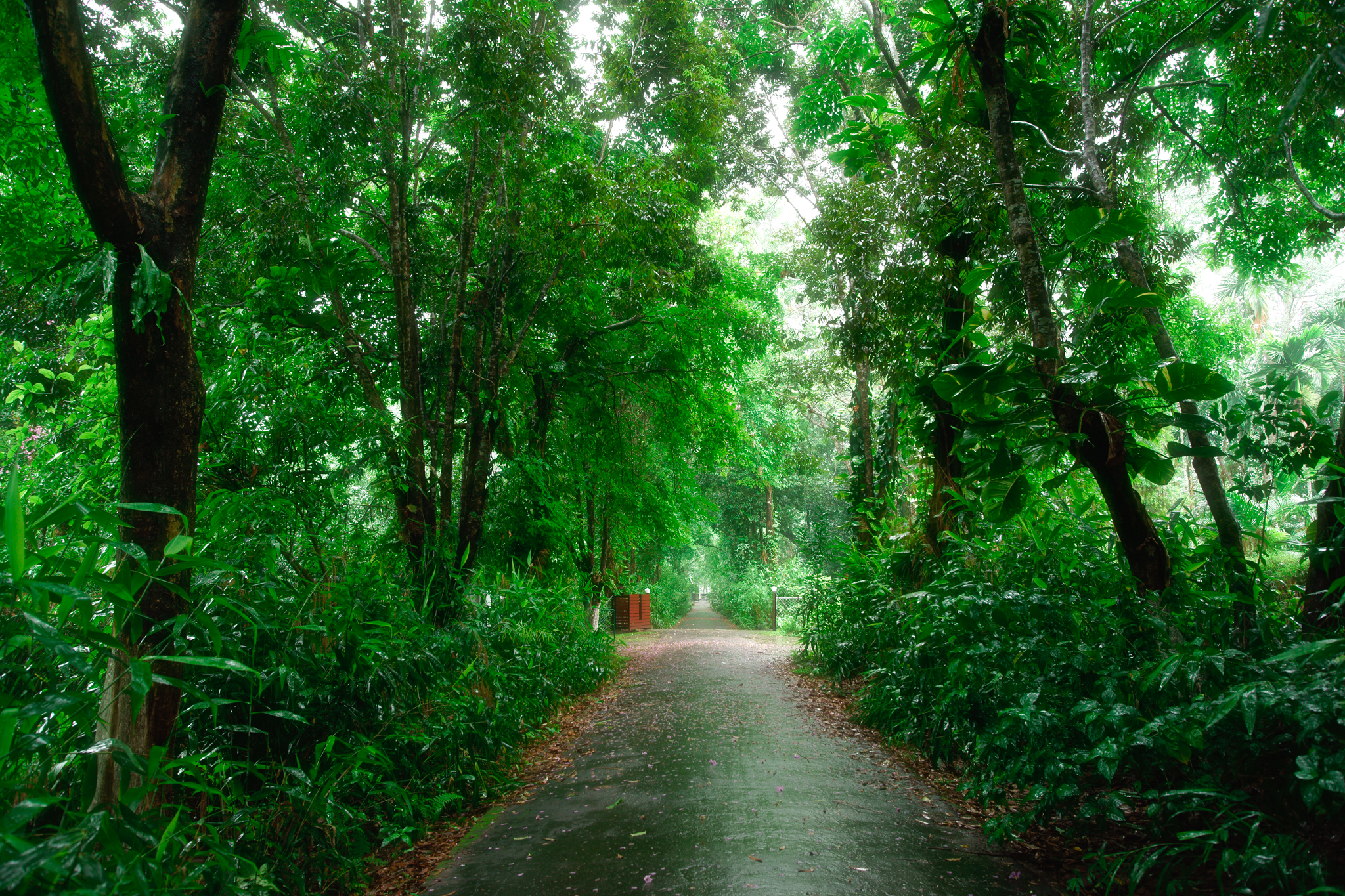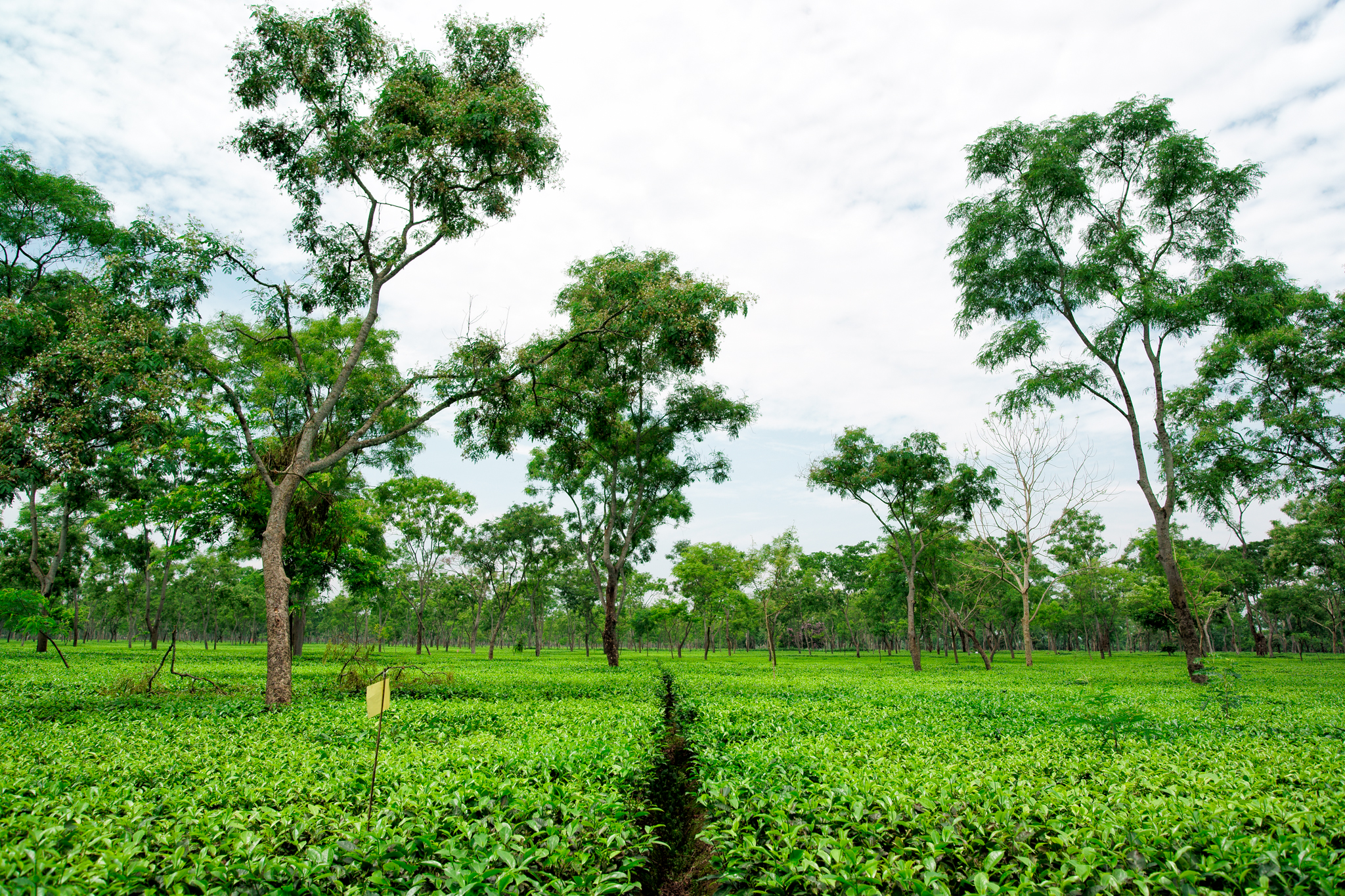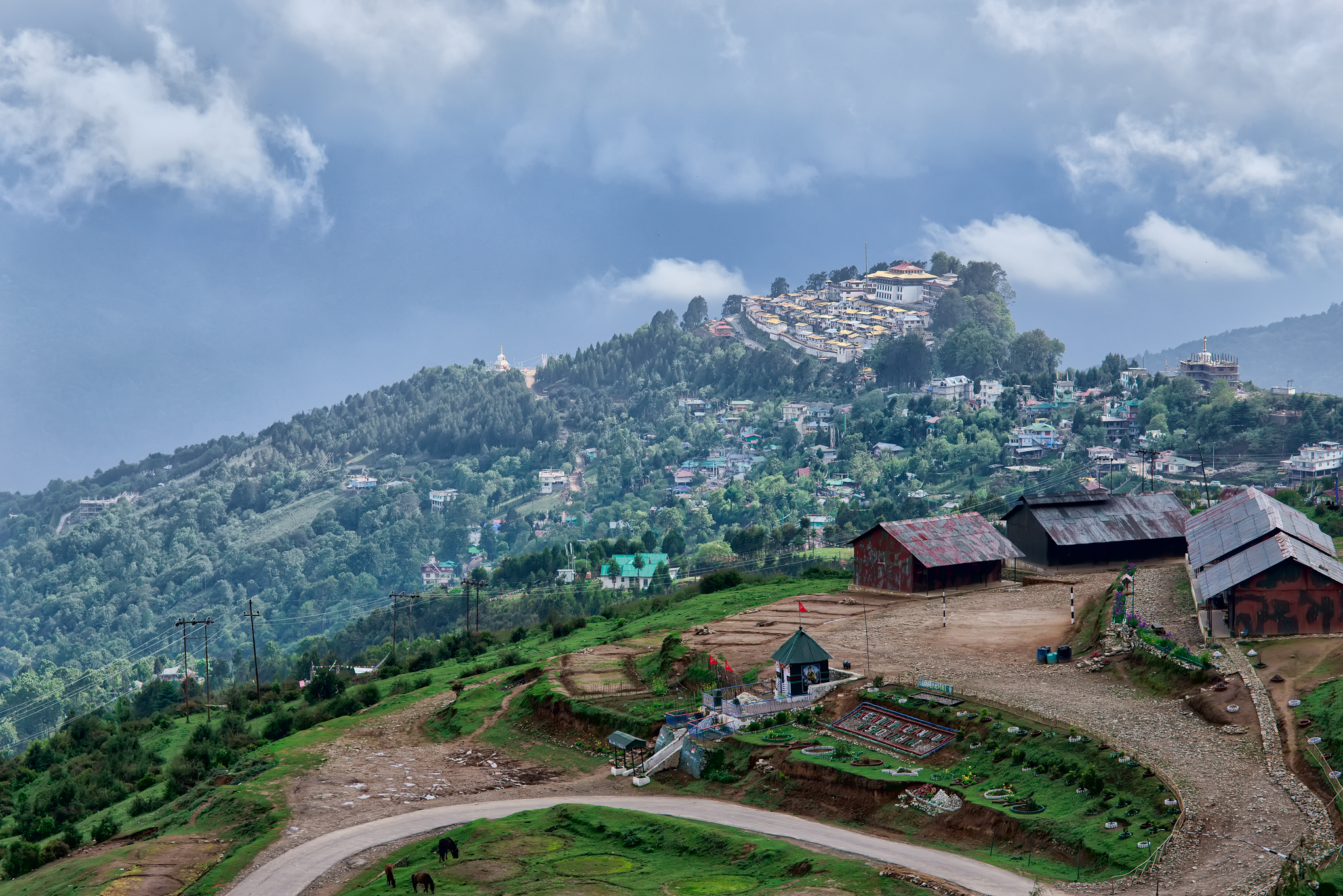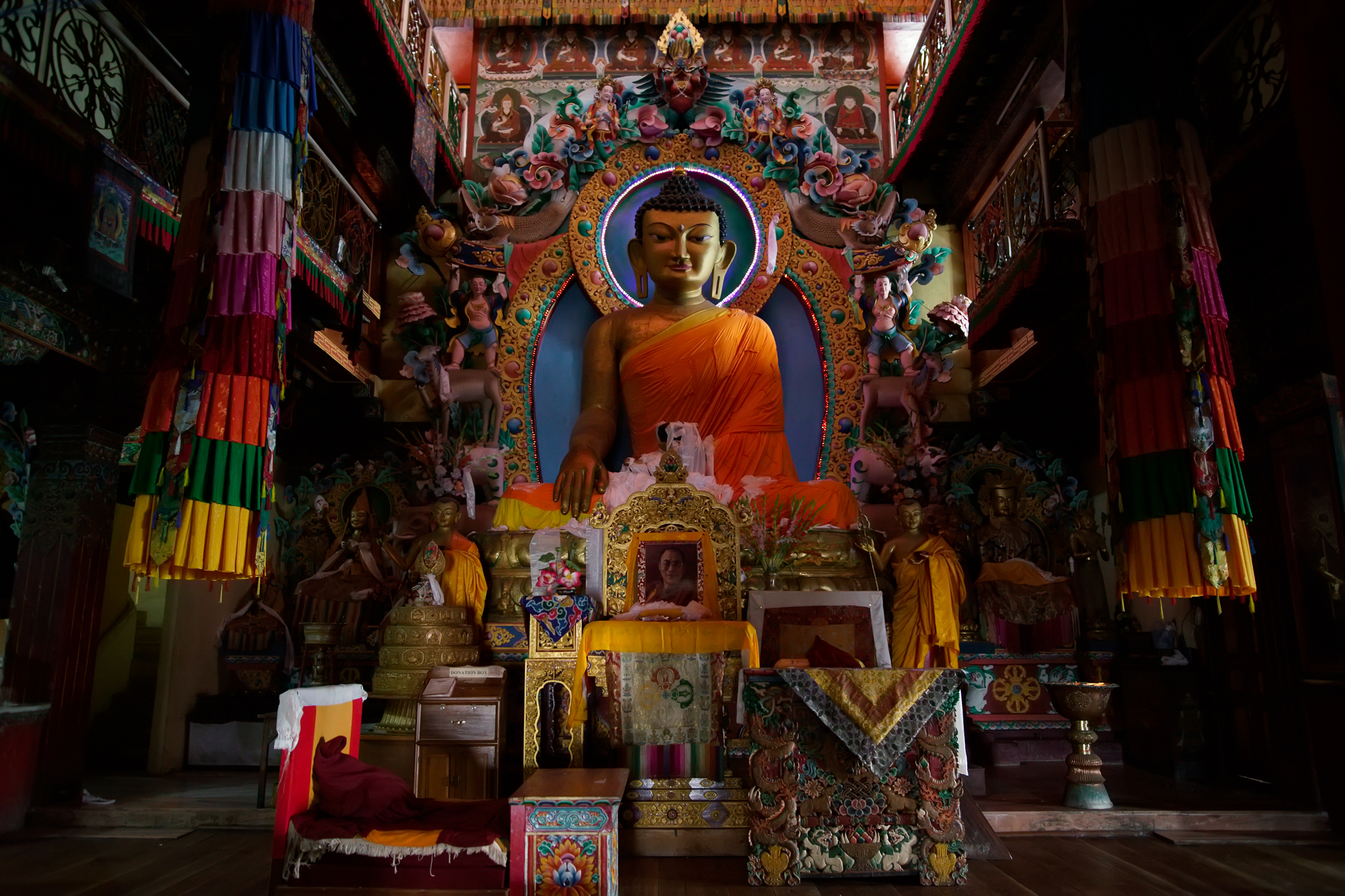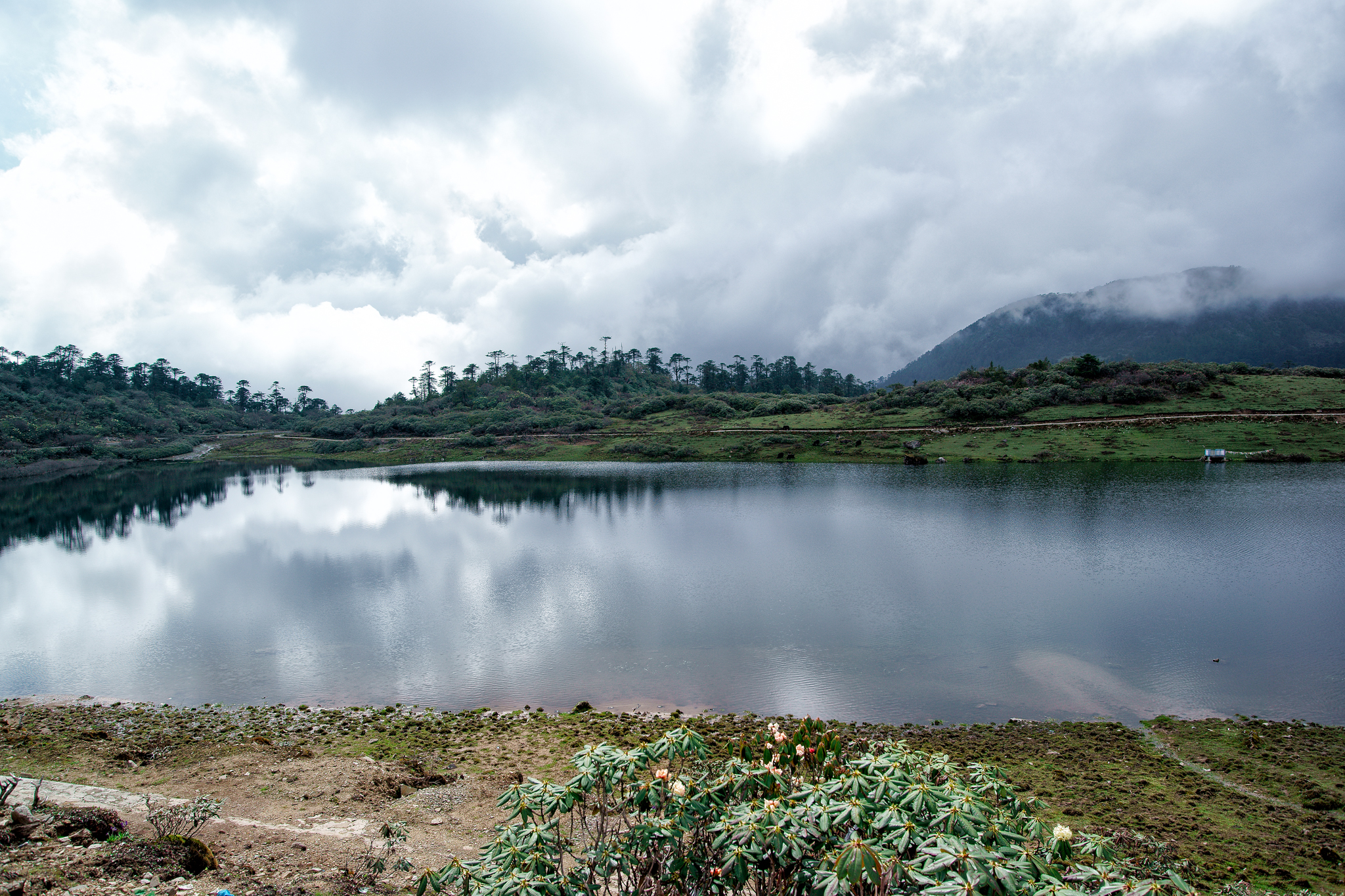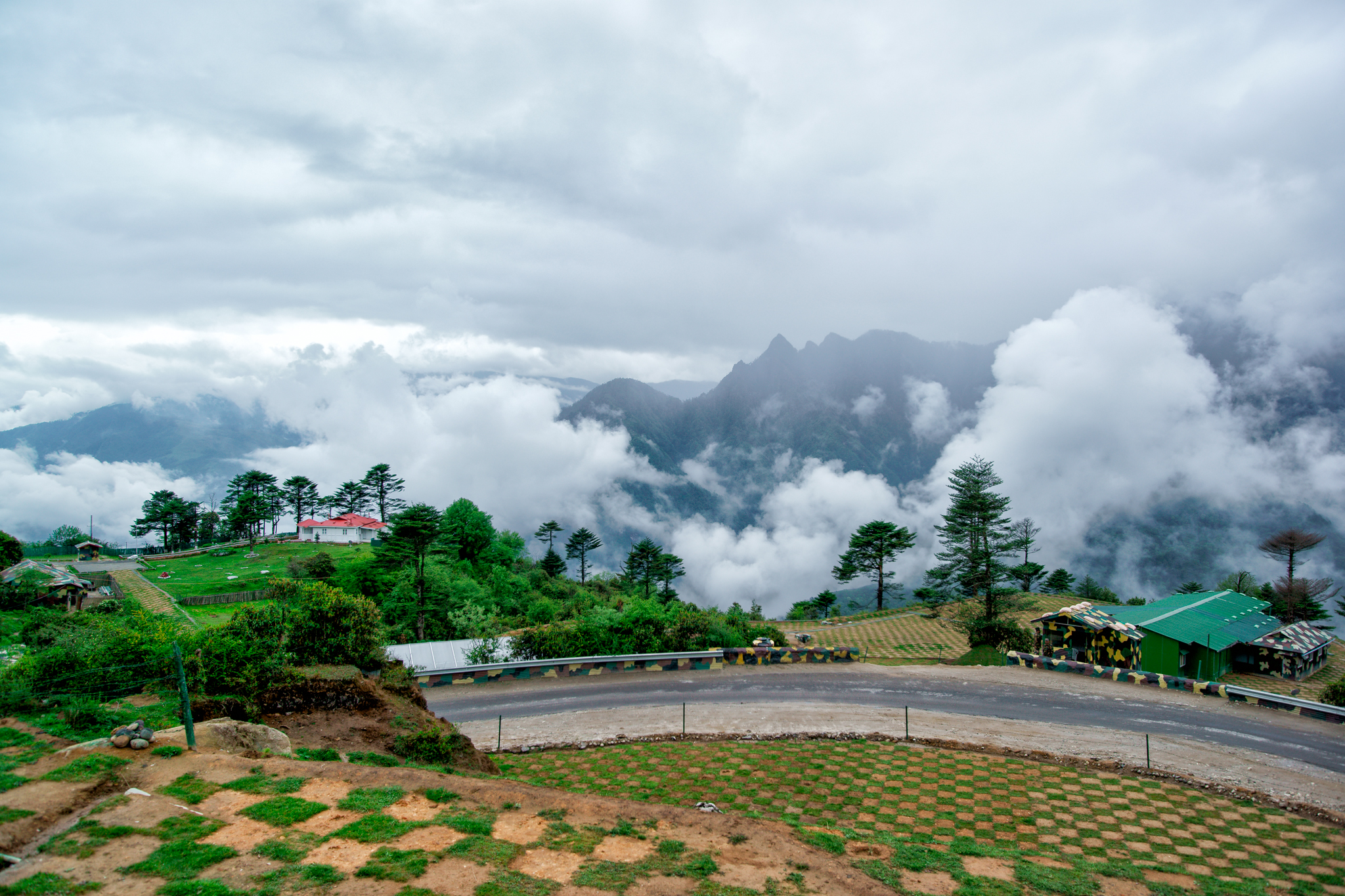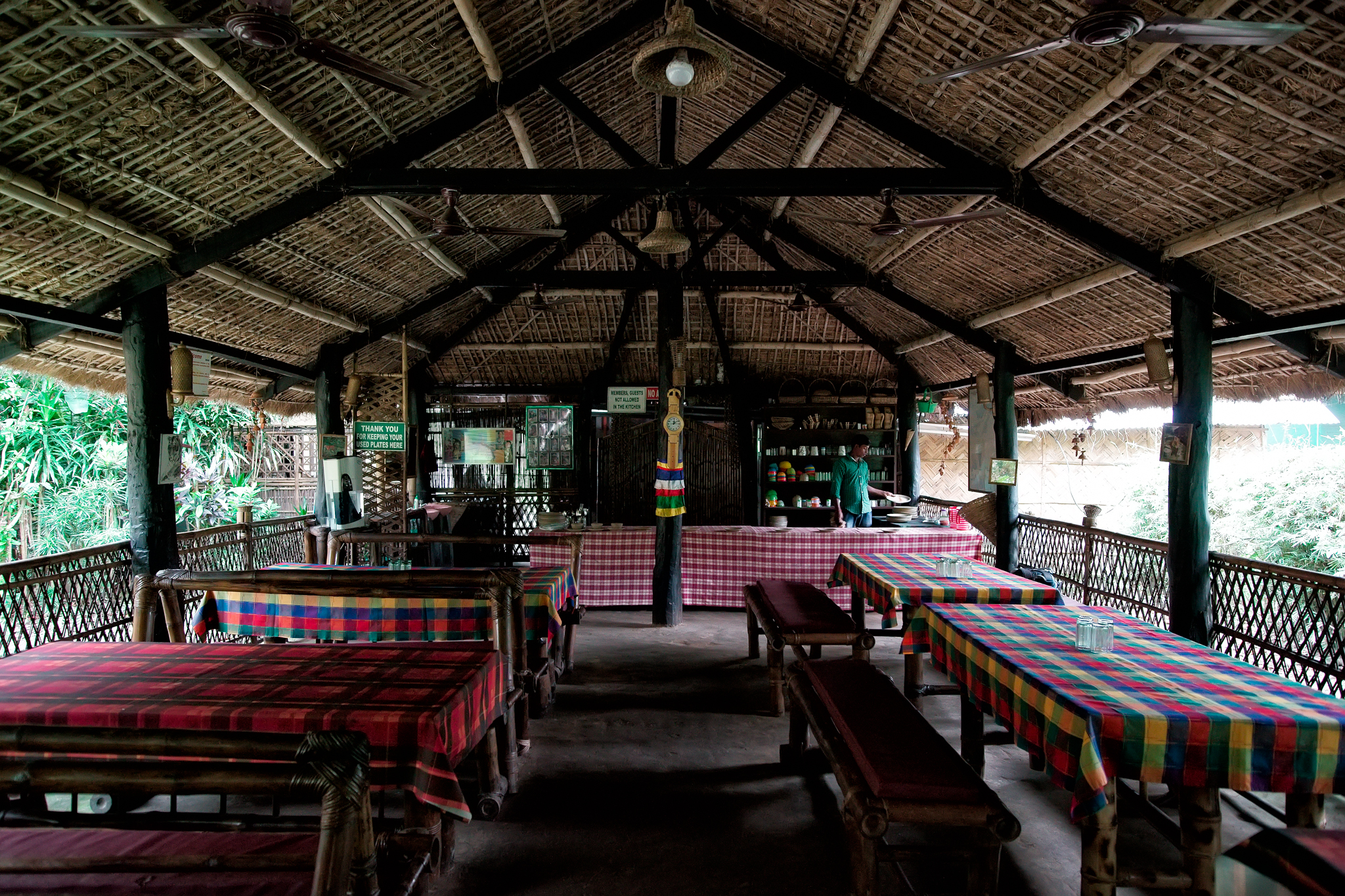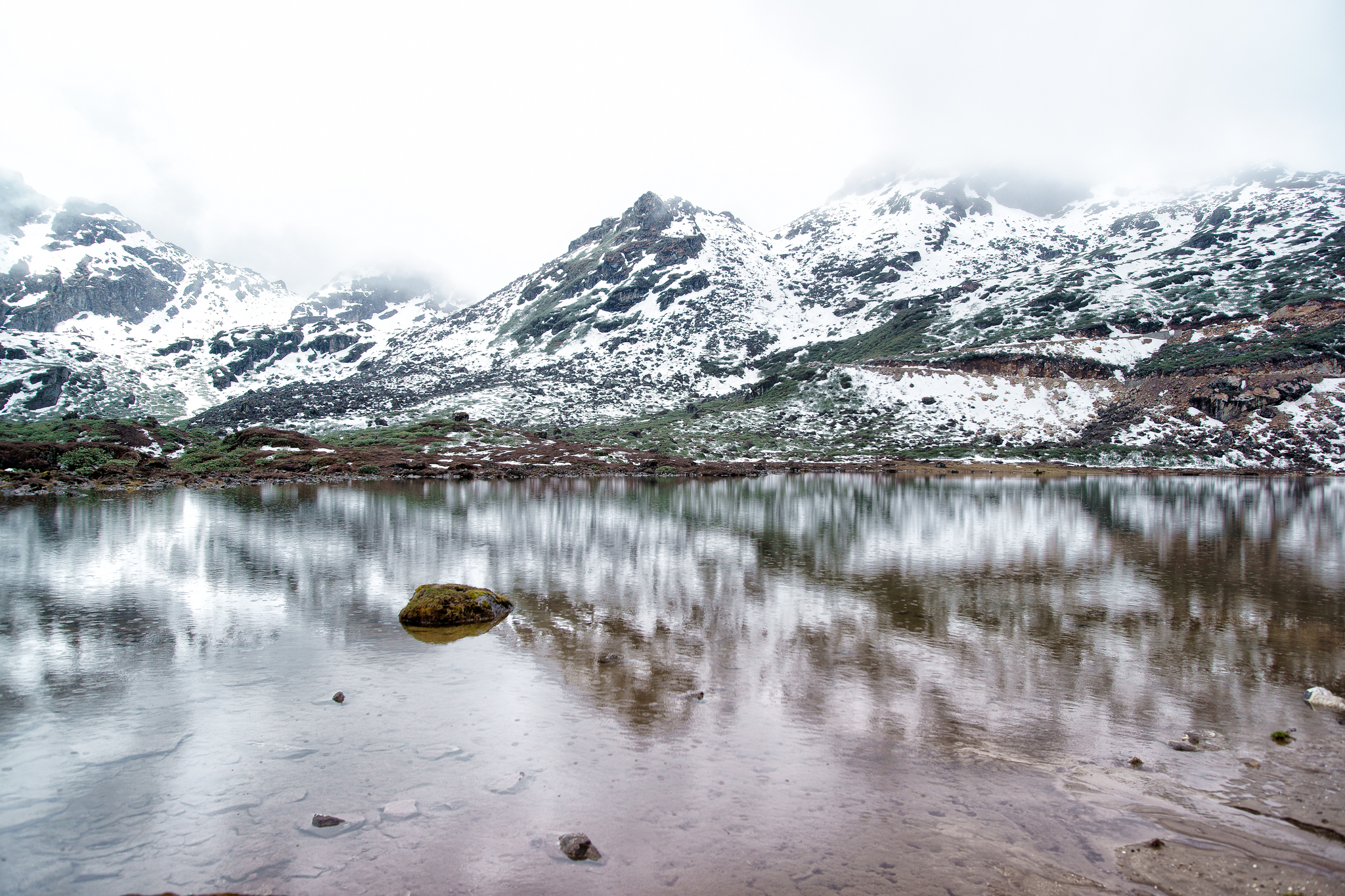
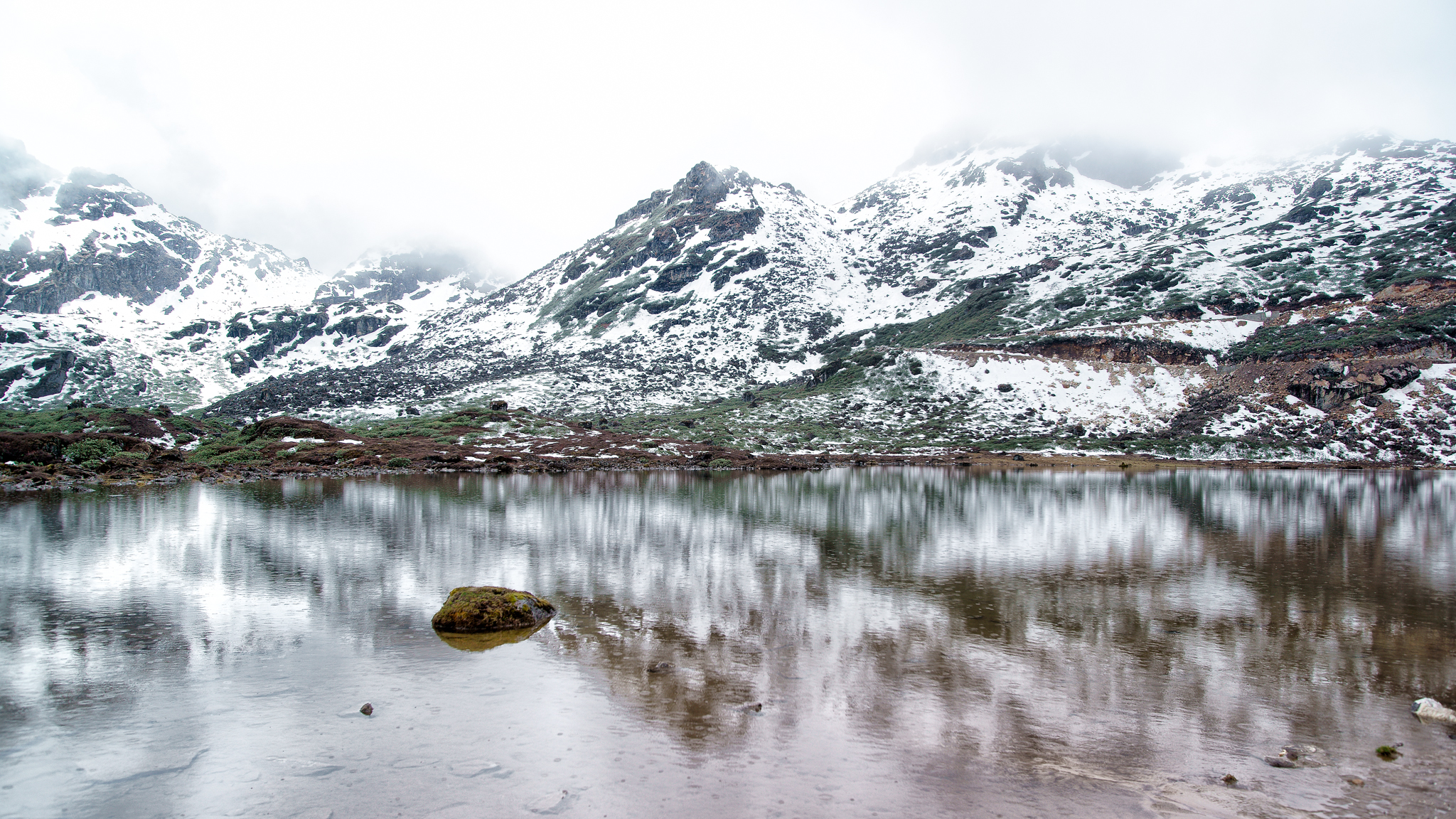 God gave us the gift of life; it is up to us to give ourselves the gift of living well.
God gave us the gift of life; it is up to us to give ourselves the gift of living well.
— Voltaire
I have a thing for the dawn … and the mountains. Arunachal Pradesh, which literally means the “land of the dawn-lit mountains” held the promise where I could find both. So when I heard a couple of my cousins were taking a trip there, the decision to join them was instantaneous. And the best part … I didn’t even have to plan for it. 🙂
Sun, May 17 2015
It was still dark when we headed for the airport to catch our flight to Guwahati, Assam. The plan was to experience the lifestyle of a colonial tea planter amidst a twenty-two acre tea estate (read do nothing) for the first couple of days and then head toward the “land of dawn-lit mountains.”
When we landed in Guwahati, our vehicle—which had enough room for the eight of us and our bags—was waiting. A four-hour drive to the sprawling twenty-two acre tea estate with British-era bungalows awaited us.
The drive was quite uneventful except for a few habitual (so it seemed after a while) risky overtaking by our driver. Nevertheless, after almost four hours, the Google Maps app on my iPhone seemed to suggest that we were pretty close to our destination. However, we soon met with a dead-end and asking local people the direction to “Wild Mahseer”—the British-era bungalow—didn’t seem to help. Thankfully, calling up the guys at Wild Mahseer helped and we realized we had to makeup for a small detour of about fifteen minutes. As we approached the twenty-two acre Adabari tea estate a local guy seemed to know what we were talking about and asked us whether it’s the same place where Aamir Khan (one of the top Indian film actors) had stayed. We soon realized that all along we had been asking the wrong questions. We were dumb to ignore the fact that Bollywood is big in India. Nevertheless, we soon reached our bungalow and needless to say it was quite impressive.
Mon, May 18 2015
It was raining when I woke up. I have always felt that there’s something incredibly romantic about seeing raindrops trickle down a window pane against the lush green backgrounds of a tea estate. The fact that it was happening as I woke up, only after our first night at a colonial tea estate, seemed like a gift.
Later in the day, a walk around the tea estate gave us an idea of how expansive it was. The cloud cover helped us from getting burnt. It was a beautiful walk peppered with light banter.
Mon, May 19 2015
After a heavy breakfast we were ready to head off to the mountains. However, not before I took a shot of the dining area.
 I was told that once this used to be a garage for the estate’s tractor until it was modified. Now that’s some modification. 🙂
I was told that once this used to be a garage for the estate’s tractor until it was modified. Now that’s some modification. 🙂
After we reached Bomdila, the headquarters of West Kameng district in Arunachal Pradesh, we went for a walk to the nearby Buddha’s Park. The newly built park has a statue of Buddha and a series of chortens with prayer wheels. However, what caught my attention for most parts where the prayer flags against the ominous-looking cloud covered sky.
 Tibetans believe that Lungta (wind horse) carries the goodwill and compassion encoded in the mantras on the prayer flags to all-pervading space thus benefiting all.
Tibetans believe that Lungta (wind horse) carries the goodwill and compassion encoded in the mantras on the prayer flags to all-pervading space thus benefiting all.
The prayer flags fluttering in the winds and the clouds hanging over the mountains at a distance made me feel I was a lot closer to heaven than I ever was.
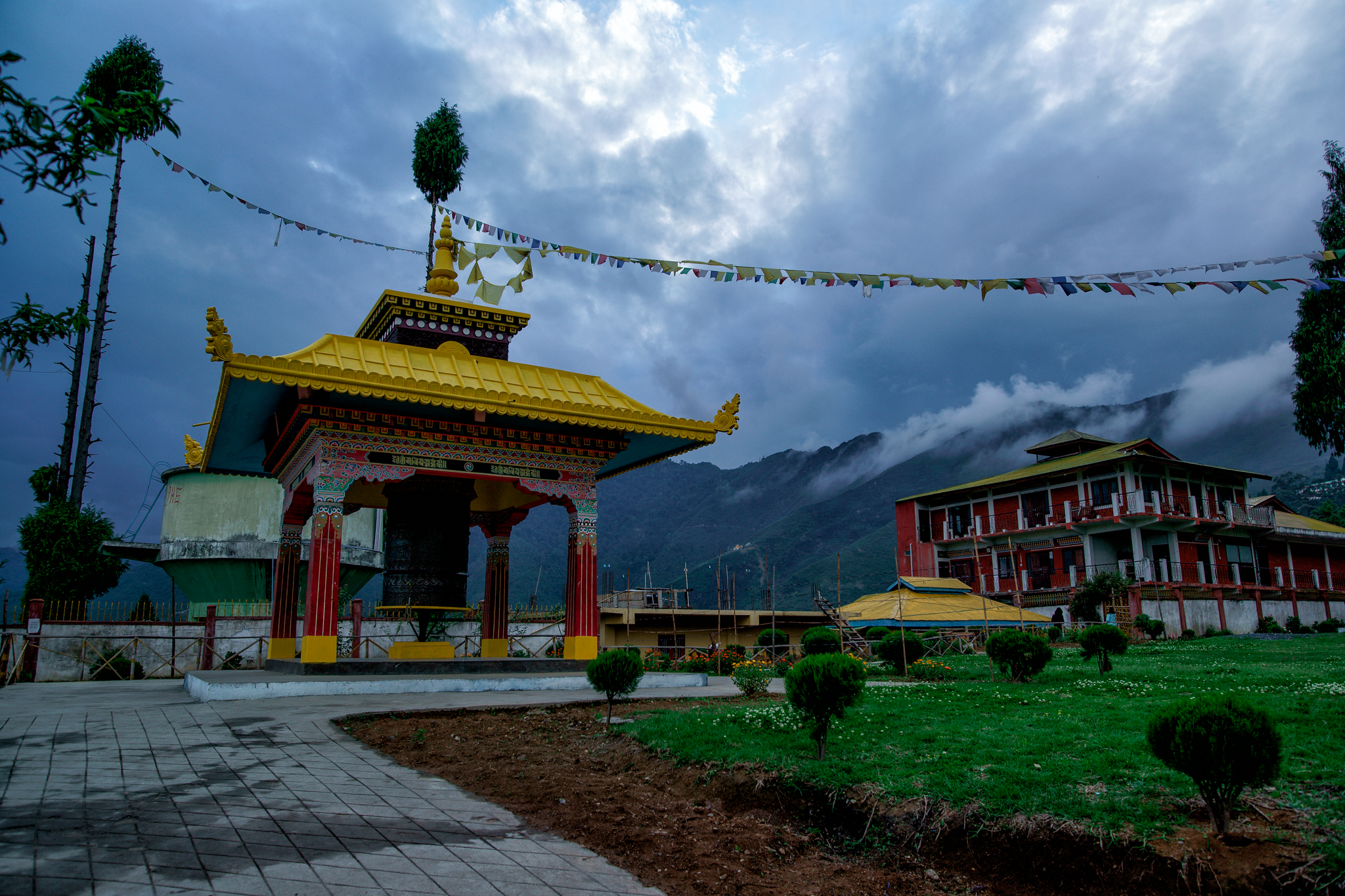 The gods seemed to be looking down at us with compassion. This was the second gift.
The gods seemed to be looking down at us with compassion. This was the second gift.
Wed, May 20 2015
We decided to hike to Bomdila Monastery. Though a bit steep at times, it was quite a nice walk amid rolling hills and fluttering prayer flags.
Bomdila Monastery (also known as the Gentse Gaden Rabgyel Lling monastery), a replica of the Tsona Gontse monastery at Tsona in the southern Tibet, was set up by the twelfth reincarnate of the Tsona Gontse Rinpoche in 1965 before his death in 1966. The thirteenth reincarnation of Tsona Gontse Rinponche renovated and enlarged the monastery by including a huge main prayer hall, which was further blessed by His Holiness the fourteenth Dalai Lama in 1997.
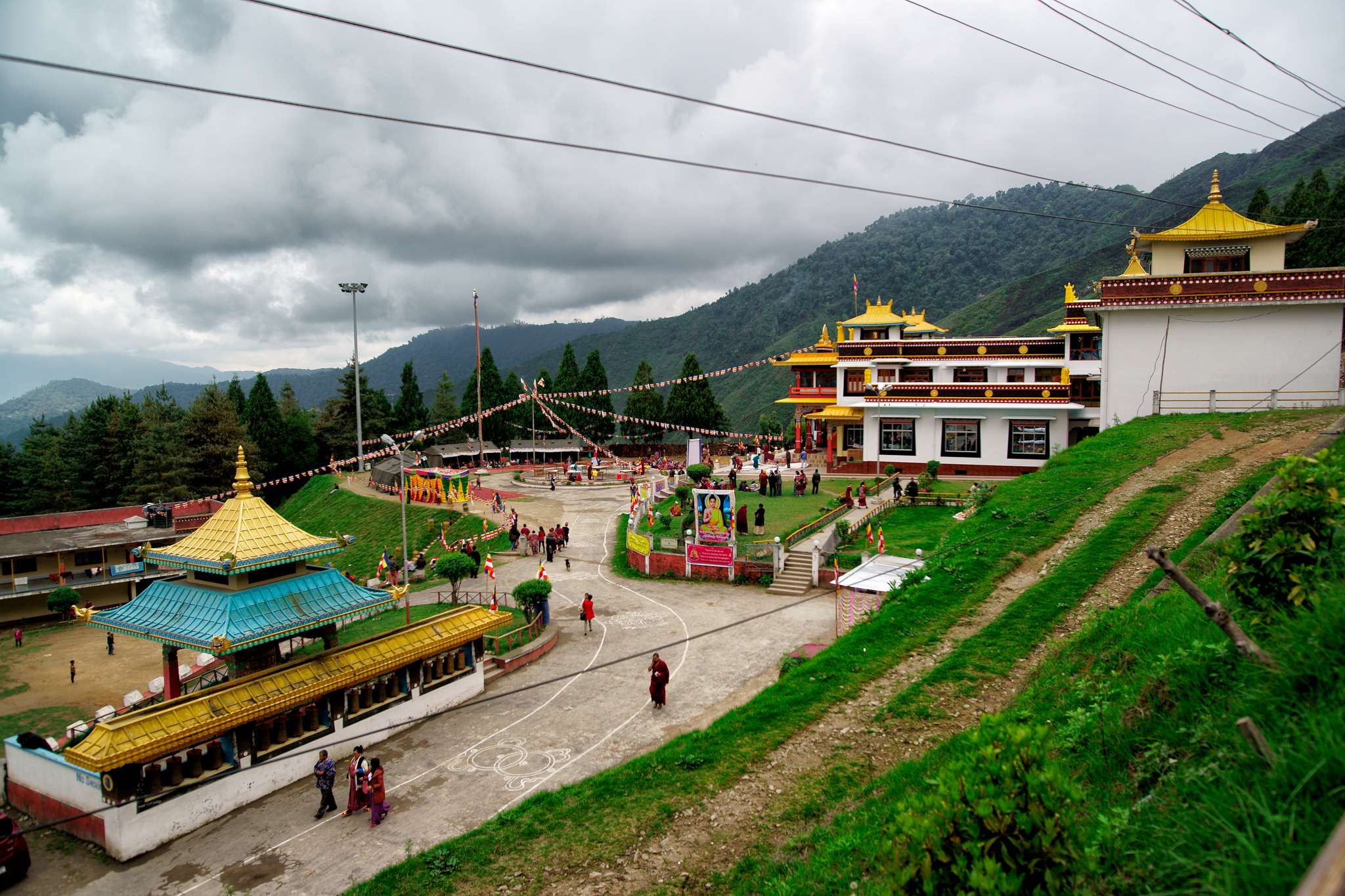 We discovered this vantage point, from where the entire monastery and its grounds were visible, by chance. It was quite a view.
We discovered this vantage point, from where the entire monastery and its grounds were visible, by chance. It was quite a view.
Thu, May 21 2015
While on our way to Dirang we passed through a cute little 17th century fort called Dirang Dzong (Dzong means fort) in the middle of a few small huts inhabited by the Monpa community.
 The fort was nothing to write home about. But the view from its courtyard was magnificent.
The fort was nothing to write home about. But the view from its courtyard was magnificent.
When we reached our hotel in Dirang, I didn’t care much about the rooms or the facilities (though they were quite good). The best part without an ounce of doubt was its location with a breathtaking view of the Dirang valley.
In the afternoon, we hiked down the valley to the shore of Kameng River and did other fun stuff. However, the thing I was most eagerly waiting for was the onset of dusk.
As dusk rolled in I took multiple long exposures to capture the entire transition from sunset to total darkness. All of them looked great but especially one seemed magical.
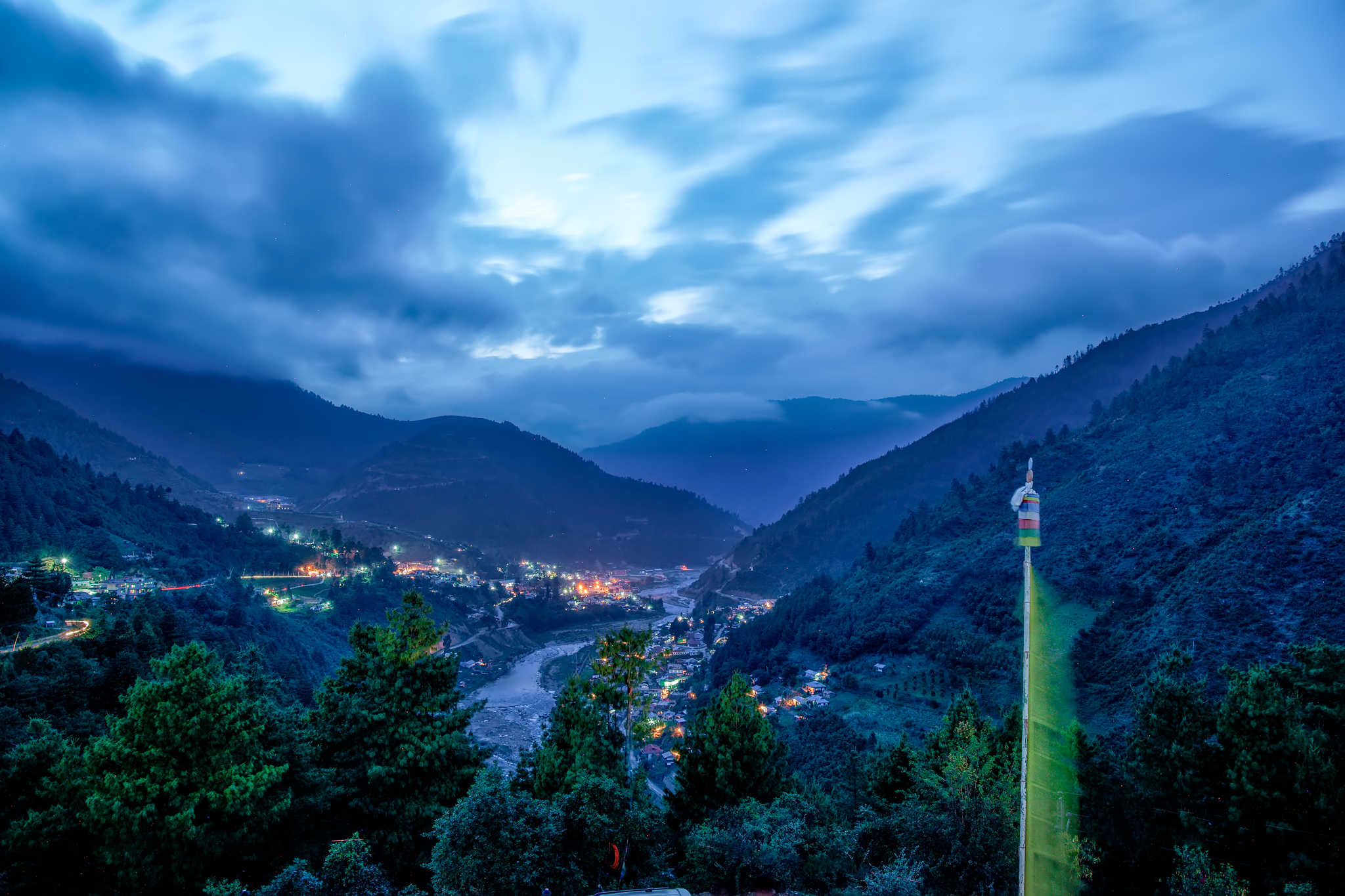 This was the third gift. I would pay any price for this view.
This was the third gift. I would pay any price for this view.
Fri, May 22 2015
Protected by the Eastern Himalayas, caressed by the Kameng River, and dotted by fruit orchards is a place called Sangti Valley—a slice of heaven on earth. We decided to hike down to the valley and have a picnic.
The view from the top stopped me on my tracks. I could have sat there all day looking at this view … at how it changed with the light.
 However, we had planned for a picnic down at the valley so we decided to get going. Once we reached at the base, the women in our group wanted to cross the river and get to the vast expanse of lush green fields on the other side of the river. The men (including me), with their boots on, were reluctant to get into the knee-deep water. But we had little choice as the women with their flip-flops had crossed over, ignoring our ominous warnings, even before we had begun to untie our shoelaces.
However, we had planned for a picnic down at the valley so we decided to get going. Once we reached at the base, the women in our group wanted to cross the river and get to the vast expanse of lush green fields on the other side of the river. The men (including me), with their boots on, were reluctant to get into the knee-deep water. But we had little choice as the women with their flip-flops had crossed over, ignoring our ominous warnings, even before we had begun to untie our shoelaces.
However, we were glad that we did cross the river (my son had a different opinion but we’ll live with it). The walk across the valley was one of the most beautiful experiences of our trip. And we did light a fire and prepare a small meal. It was, for me, one of the best dining experiences ever. This was the fourth gift.
Sat, May 23 2015
Early morning, after breakfast we were on our way to Tawang—emphatically described as “heaven on earth” by a traveller we met at our hotel in Dirang. When we reached this impressive gateway at 13,700 ft it seemed the temperatures had dipped below freezing point. However, I was out of the car in a flash as it sure looked like a gateway to heaven.
 As I crossed the gateway and walked a bit, the mist lifted and heaven (also known as Se La, where La means pass) gradually started to reveal itself. However, it was only for a brief moment—just about enough time to press the shutter. This was the fifth gift.
As I crossed the gateway and walked a bit, the mist lifted and heaven (also known as Se La, where La means pass) gradually started to reveal itself. However, it was only for a brief moment—just about enough time to press the shutter. This was the fifth gift.
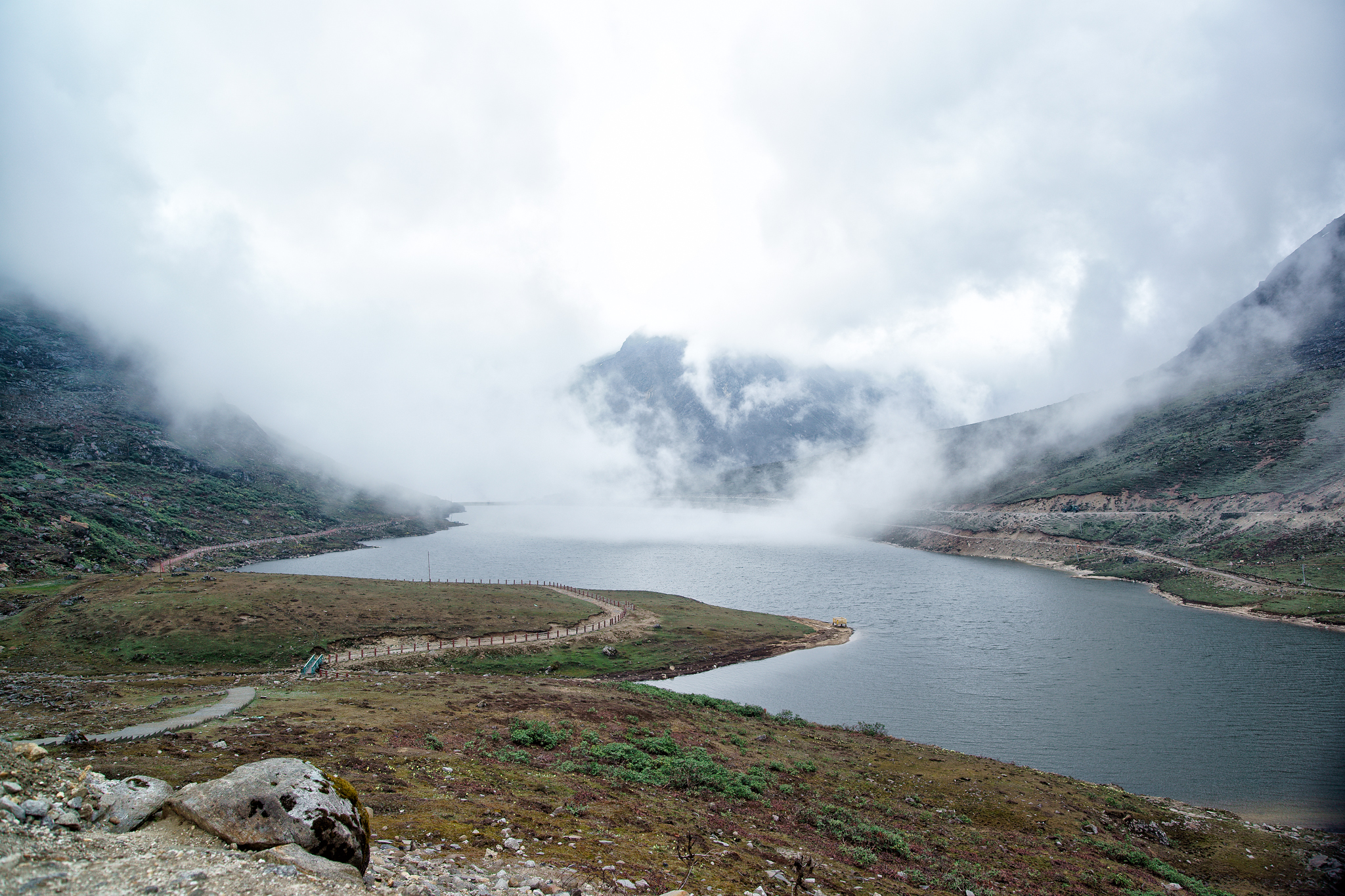 As I hiked down the lake the mist was starting to engulf the distant mountains. When I reached near the shore all that was there was the mist. As my cousin looked out into the nothingness I quickly took a snapshot. I think it looks pretty neat.
As I hiked down the lake the mist was starting to engulf the distant mountains. When I reached near the shore all that was there was the mist. As my cousin looked out into the nothingness I quickly took a snapshot. I think it looks pretty neat.
 On our way to the resort in Tawang we saw this cute little waterfall. I’ve literally seen thousands of waterfall, but none with crisscrossed prayer flags … enough to keep the Lungta busy I assume. 🙂
On our way to the resort in Tawang we saw this cute little waterfall. I’ve literally seen thousands of waterfall, but none with crisscrossed prayer flags … enough to keep the Lungta busy I assume. 🙂
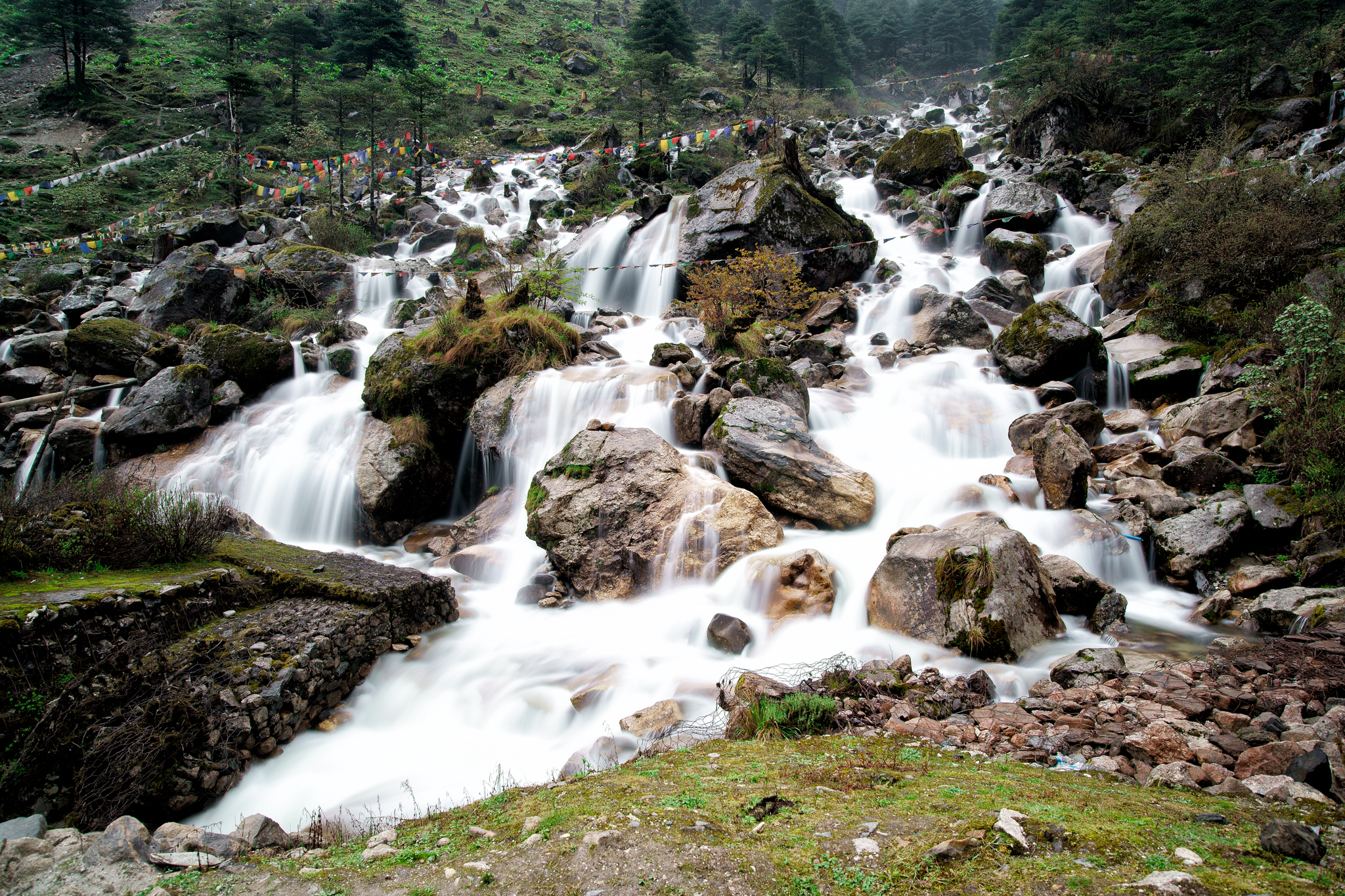 However, the best was yet to come. Just over a mile away from the town of Jang the most spectacular waterfall in this part of the country awaited us.
However, the best was yet to come. Just over a mile away from the town of Jang the most spectacular waterfall in this part of the country awaited us.
But first we went to pay our homage to Jaswant Singh Rawat at Jaswant Garh War Memorial. No soldier, not even a general, is allowed to move ahead, towards the Sino-Indian border, unless he pays his tribute to rifleman Jaswant Singh Rawat, who literally was the last man standing in the Sino-Indian war of 1962. He orchestrated a counter-attack on the Chinese forces before he was severely injured by enemy bullets, captured, and then hanged. I bowed my head in reverence.
Nuranang Falls, also known as Jang Falls and Bong Bong Falls, is something to be experienced. I don’t think any photo can capture the experience of being there in person and getting wet. This was the sixth gift.
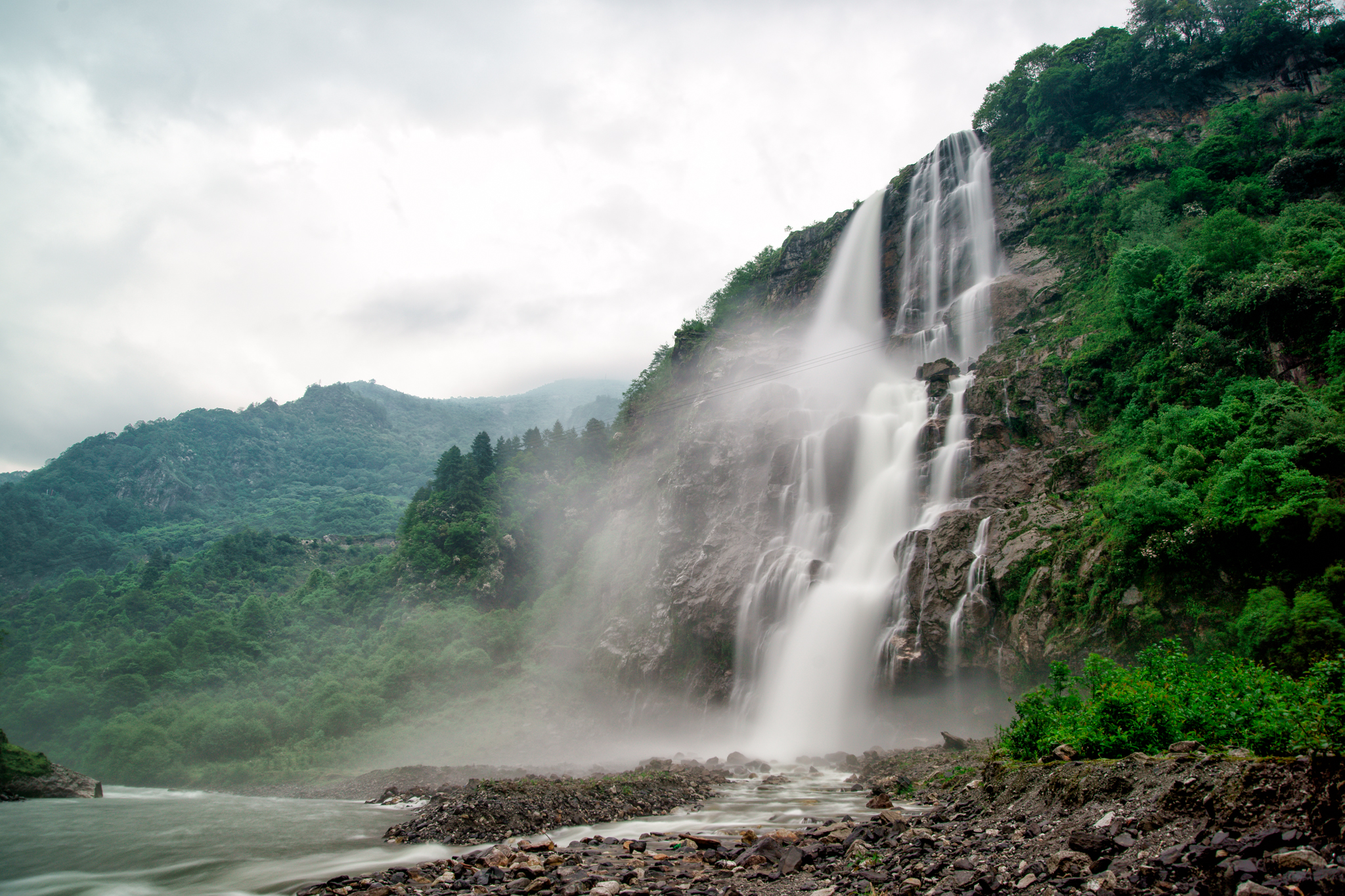 Though both me and my camera got quite drenched while taking the photo, I made a mental note to come back to this place without the camera. I wanted to walk right up there and relive my “Niagara experience” without a care in the world.
Though both me and my camera got quite drenched while taking the photo, I made a mental note to come back to this place without the camera. I wanted to walk right up there and relive my “Niagara experience” without a care in the world.
Sun, May 24 2015
When we reached Tawang we were told that our Inner Line Permit was not enough to take us to Bum La—the pass at the Indo-China border. Being a restricted area with heavy army deployment, we needed another Pass from the state government and it would take the whole day to get it. So we were looking forward to a relaxed day with a visit to Tawang Monastery in the morning and Tawang War Memorial in the evening on our schedule.
Tawang Monastery (also known in Tibetan as Galden Namgey Lhatse) is the largest monastery in India and the second largest in the world. There is something deeply spiritual about the monastery nestled on a mountain top.
A feeling of peace, love, and compassion engulfed me as I stepped in.
Prayer wheels are everywhere in the land of dawn-lit mountains with the mantra Oṃ maṇi padme hūṃ written on outside of the wheel. So it wasn’t surprising to see several of them in the monastery as well. According to the Tibetan Buddhist tradition, spinning such a wheel will have much the same meritorious effect as orally reciting the prayers. I found a local woman going around, spinning each wheel, reciting the mantra, and using mantra beads for keeping count. Her devotion was contagious.
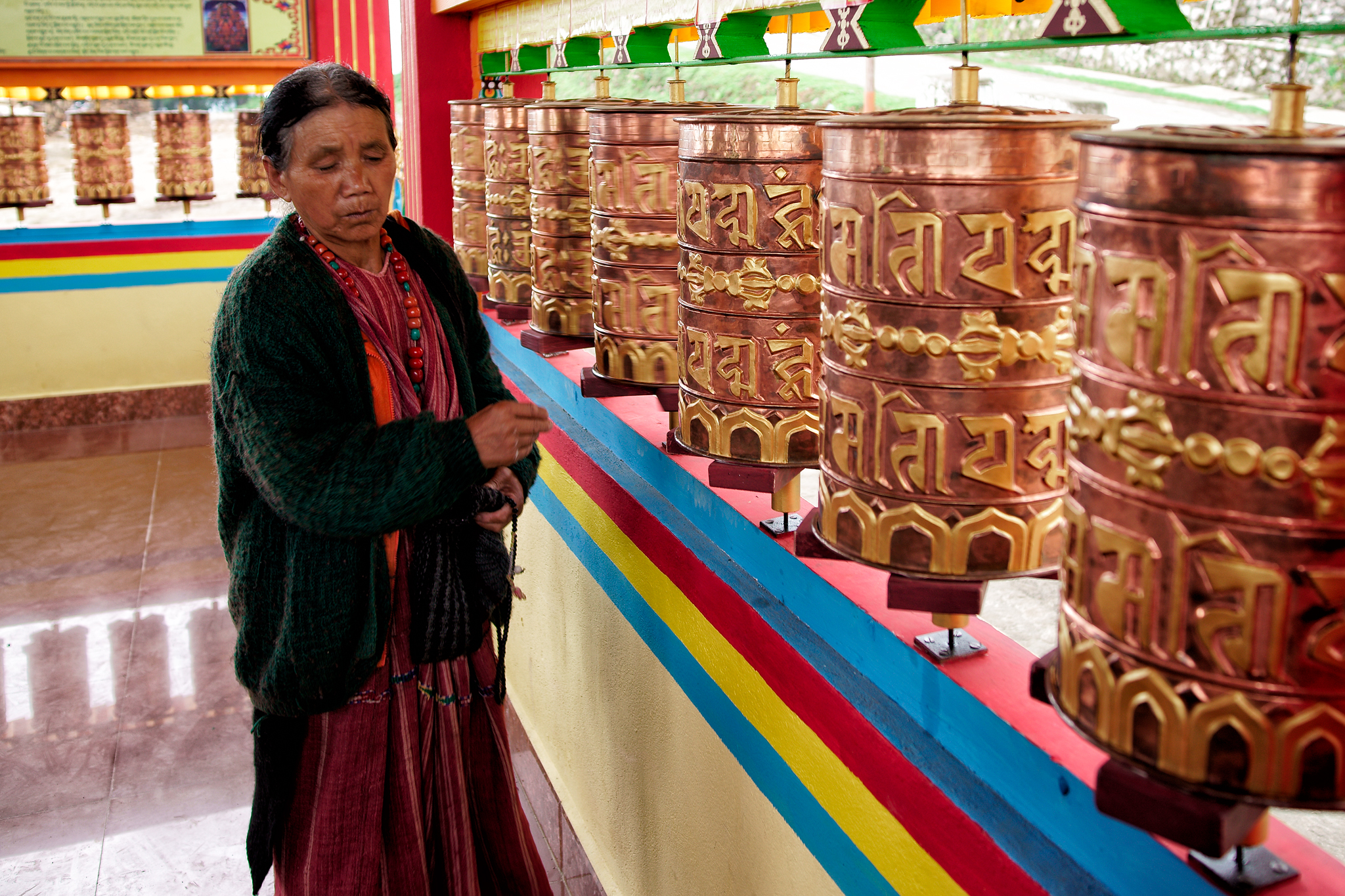 It was almost lunchtime when we were about to enter the Dukhang—the main temple. I couldn’t help but notice the synchronicity between the pair of monks and the pair of pigeons. I thought it made a great photo.
It was almost lunchtime when we were about to enter the Dukhang—the main temple. I couldn’t help but notice the synchronicity between the pair of monks and the pair of pigeons. I thought it made a great photo.
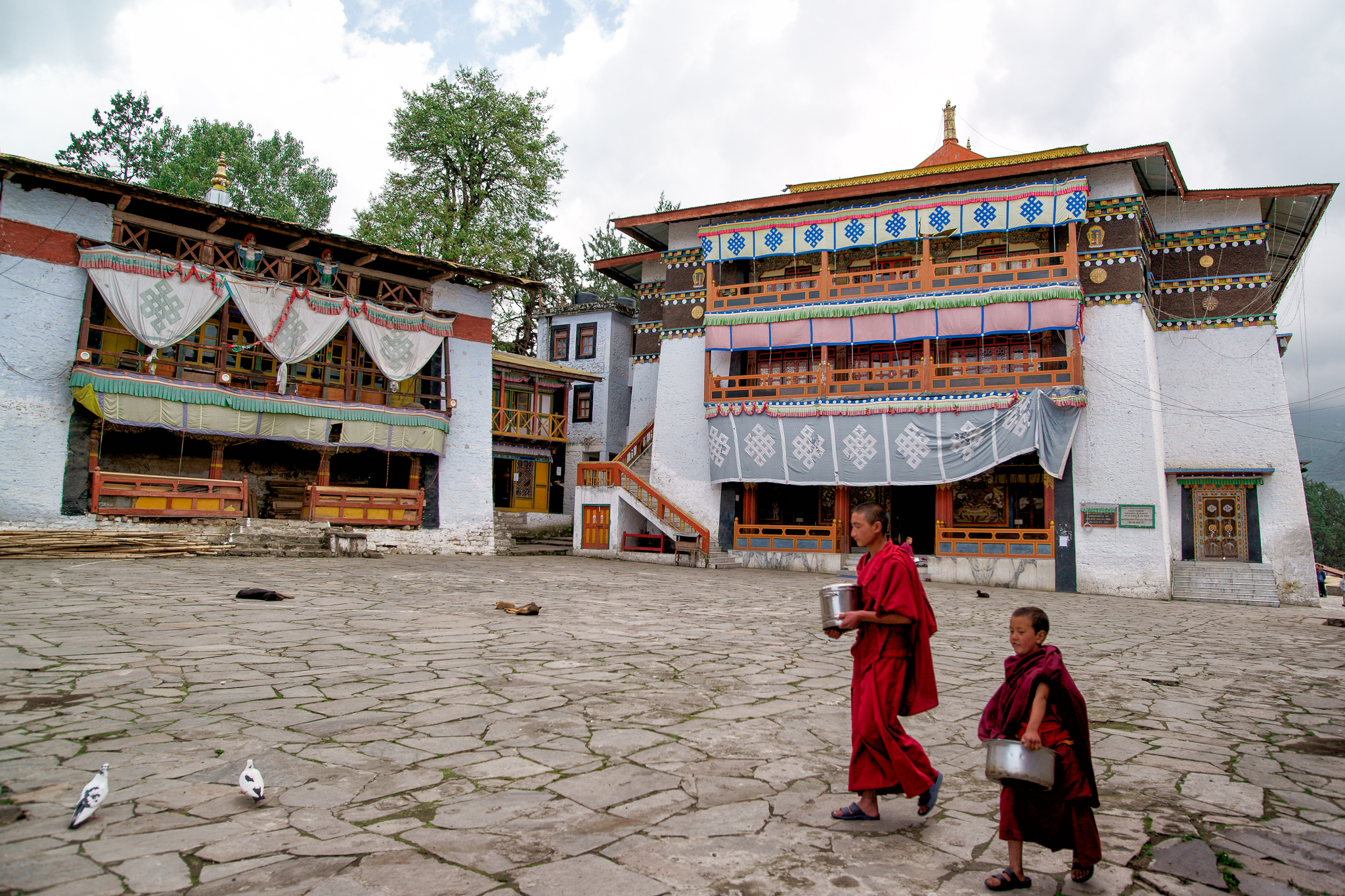 As I entered the temple it took some time for the eyes to get adjusted. When it did I was quite overwhelmed by the deep dark colors of the interior. It looked like a perfect spot to take a photo. I caught a glimpse of the eighteen feet statue of Buddha between the pillars.
As I entered the temple it took some time for the eyes to get adjusted. When it did I was quite overwhelmed by the deep dark colors of the interior. It looked like a perfect spot to take a photo. I caught a glimpse of the eighteen feet statue of Buddha between the pillars.
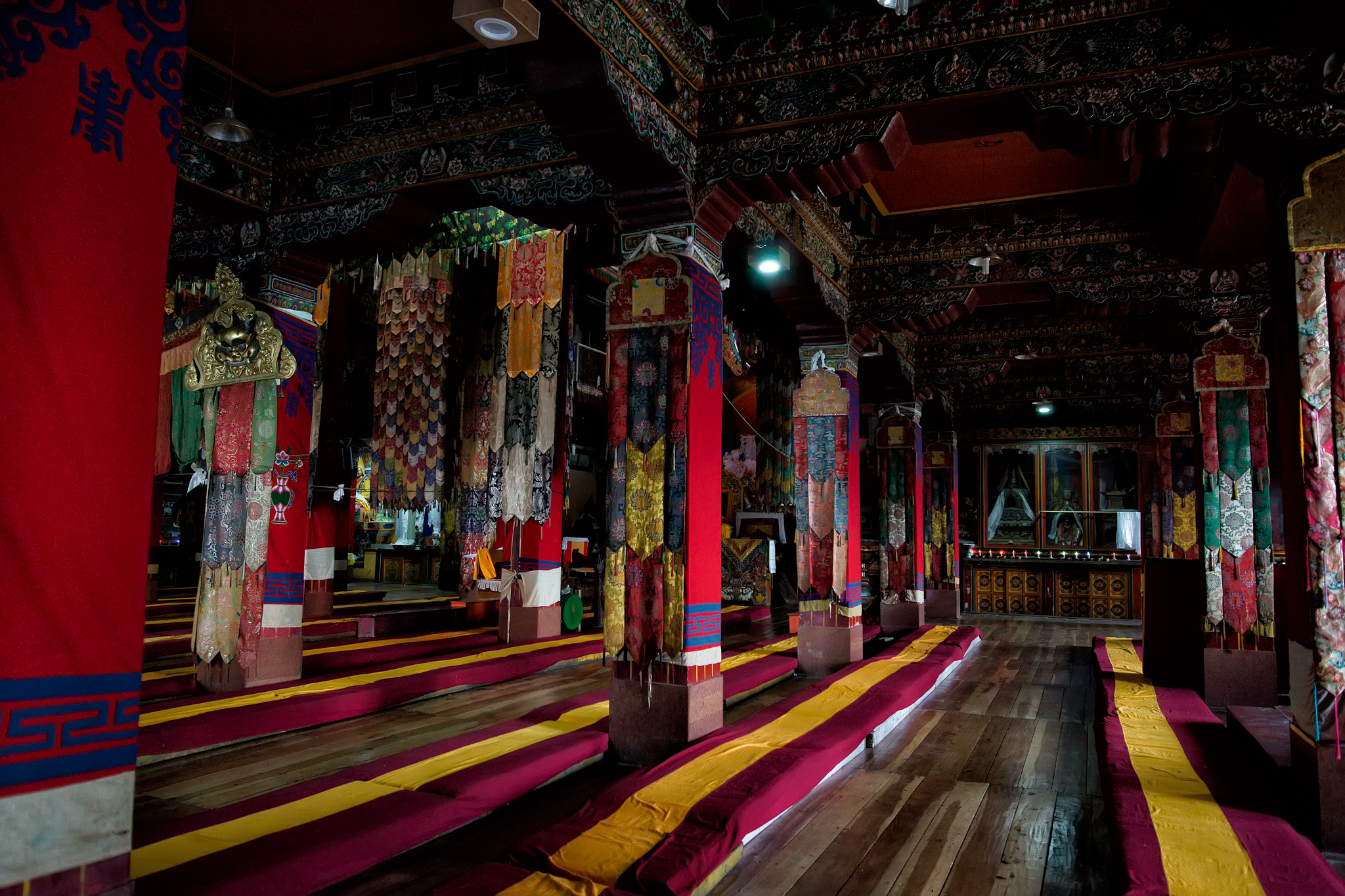 As I moved forward, I came face to face with the Buddha with his compassionate eyes looking down at me. I couldn’t help but bow my head in reverence … for the second time.
As I moved forward, I came face to face with the Buddha with his compassionate eyes looking down at me. I couldn’t help but bow my head in reverence … for the second time.
Mon, May 25 2015
The day, we had been traveling for all this while, was finally here. We got our permit to visit Bum La. We were all pretty excited to see how “heaven on earth” looked. Wangchu Tsering, a local guy, was our driver for the day (only local drivers and local cars are allowed on Bum La). He seemed like a nice guy.
When we left the national highway behind and took to something unimaginatively called Bum La Road, we actually couldn’t spot the road. It just wasn’t there. I didn’t understand, by any stretch of imagination, why someone will call that a road. What was there looked somewhat like a pathway made of rocks and boulders. I couldn’t imagine how someone could drive a car through all that. Our lives were in the hands of Wangchu and his driving ability.
Wangchu was our guy. He is the most amazing guy I’ve seen behind the wheels. He surprised us. He went over the rocks, negotiated hairpin bends, and even got down at times to clear the road (literally using both his hands to move rocks) all with a smile.
It would be an understatement to say the road was the worst of my life (and I’ve done quite a bit of off-roading myself). Thankfully, we did reach Bum La without a scratch on us. An army officer greeted us and told us about the significance of the place, the history of the 1962 Sino-Indian War, and the fact that the Chinese built the twenty-five mile Bum La Road in a matter of ten days during the war. Unfortunately, we weren’t allowed to take any photos in the army area as we were told that there was some meeting going on between the Indian and the Chinese armies (it’s against the protocol to take photos during meetings). However, they said we could take photos outside the army area.
On our way back, I found an interesting rock by the road and asked Wangchu to stop the car. The rock and the mountain together looked interesting—almost like mirror images with each going the other way.
 And then after a few minutes there was this lake. Not surprisingly, I have a thing for mountain lakes too. 🙂
And then after a few minutes there was this lake. Not surprisingly, I have a thing for mountain lakes too. 🙂
 The water was still when I went down to the shore. As soon as I pressed the shutter it started to drizzle. The stillness was gone, but not before it had become mine for ever. This was the seventh gift.
The water was still when I went down to the shore. As soon as I pressed the shutter it started to drizzle. The stillness was gone, but not before it had become mine for ever. This was the seventh gift.
We departed quickly after this as we were supposed to cross a checkpoint before 11:00 a.m. to ensure that we were out of the firing range of the Indian army soon to commence its practice sessions with the 155 mm Bofors guns. Though we did manage to cross the designated checkpoint on the nick of time, we were still stopped on our tracks after a few minutes since we were pretty close to the guns being fired. An army officer informed us that we’ve got to wait until the firing stops. I didn’t mind. I’ve never seen such heavy artillery firing at such a close range before. The flash from the guns and the ensuing thundering noise did set my heart pounding and pulse racing.
Our next destination was Sungester Tso—a sacred lake for the Monpa tribe. After the first Bollywood movie that was shot here in 1996, industrious (or should I say notorious) tour guides started selling it to the tourists as Madhuri Lake (after Madhuri Dixit—the famous Indian actor who shot here for the movie). Nevertheless, the scenery was breathtaking. This was the eighth gift.
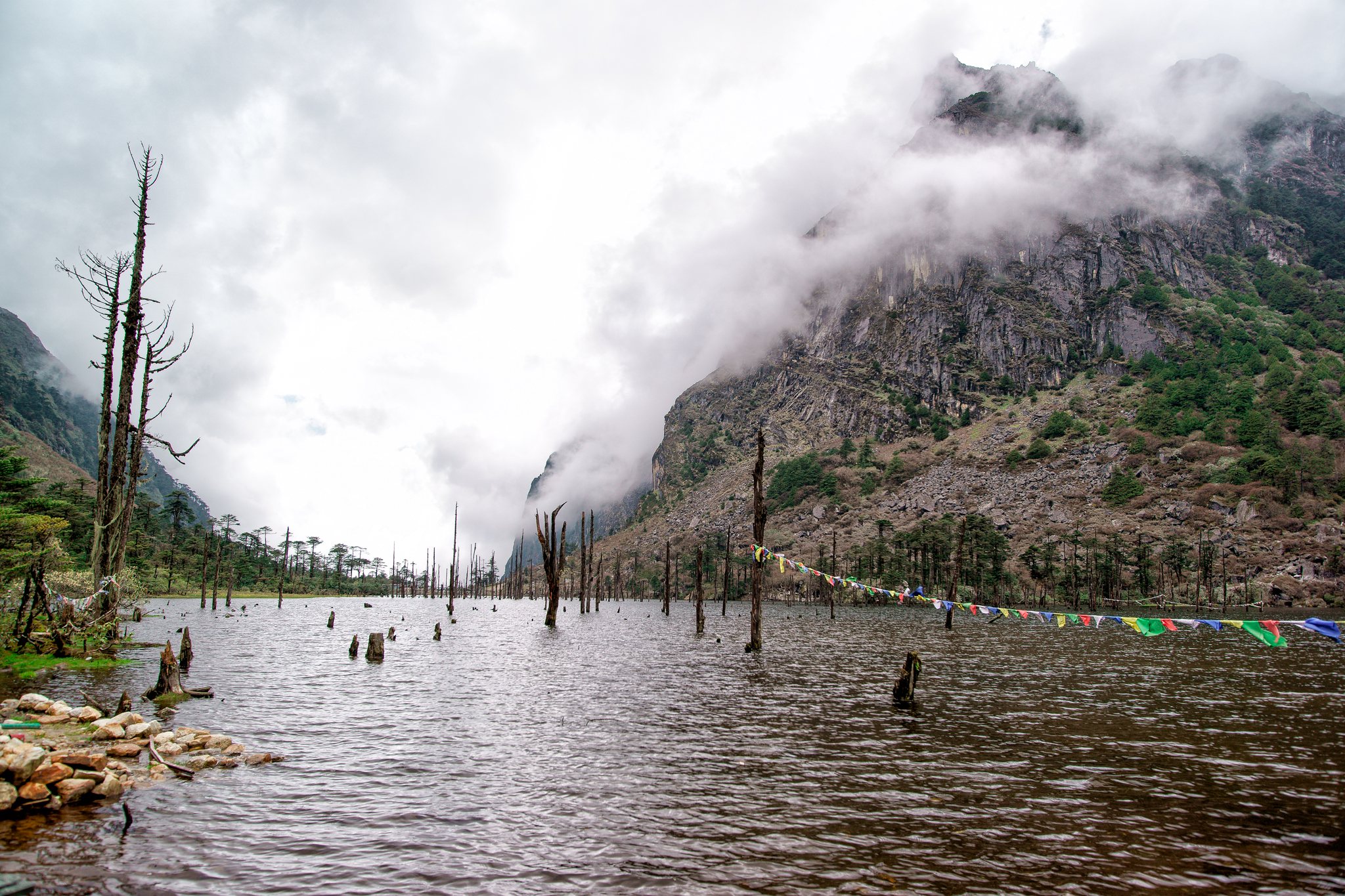 The history of Sungester is neatly described on a signboard near the lake. It says Sungester comes from Jang Nga Tseir—Jang Nga means valley and Tseir means grazing ground. The lake was created by a flash flood following the 1950 earthquake in the region, which explains the presence of the dead trees.
The history of Sungester is neatly described on a signboard near the lake. It says Sungester comes from Jang Nga Tseir—Jang Nga means valley and Tseir means grazing ground. The lake was created by a flash flood following the 1950 earthquake in the region, which explains the presence of the dead trees.
However, Sungester and the lake near Bum La are not the only lakes in the area.Wangchu told us there are one hundred and eight lakes in the area. And we saw quite a few on our way back. Especially one in the photo below attracted my attention. A part of it was shaped like a teardrop and from another angle it looked like a lemniscate (infinity symbol).
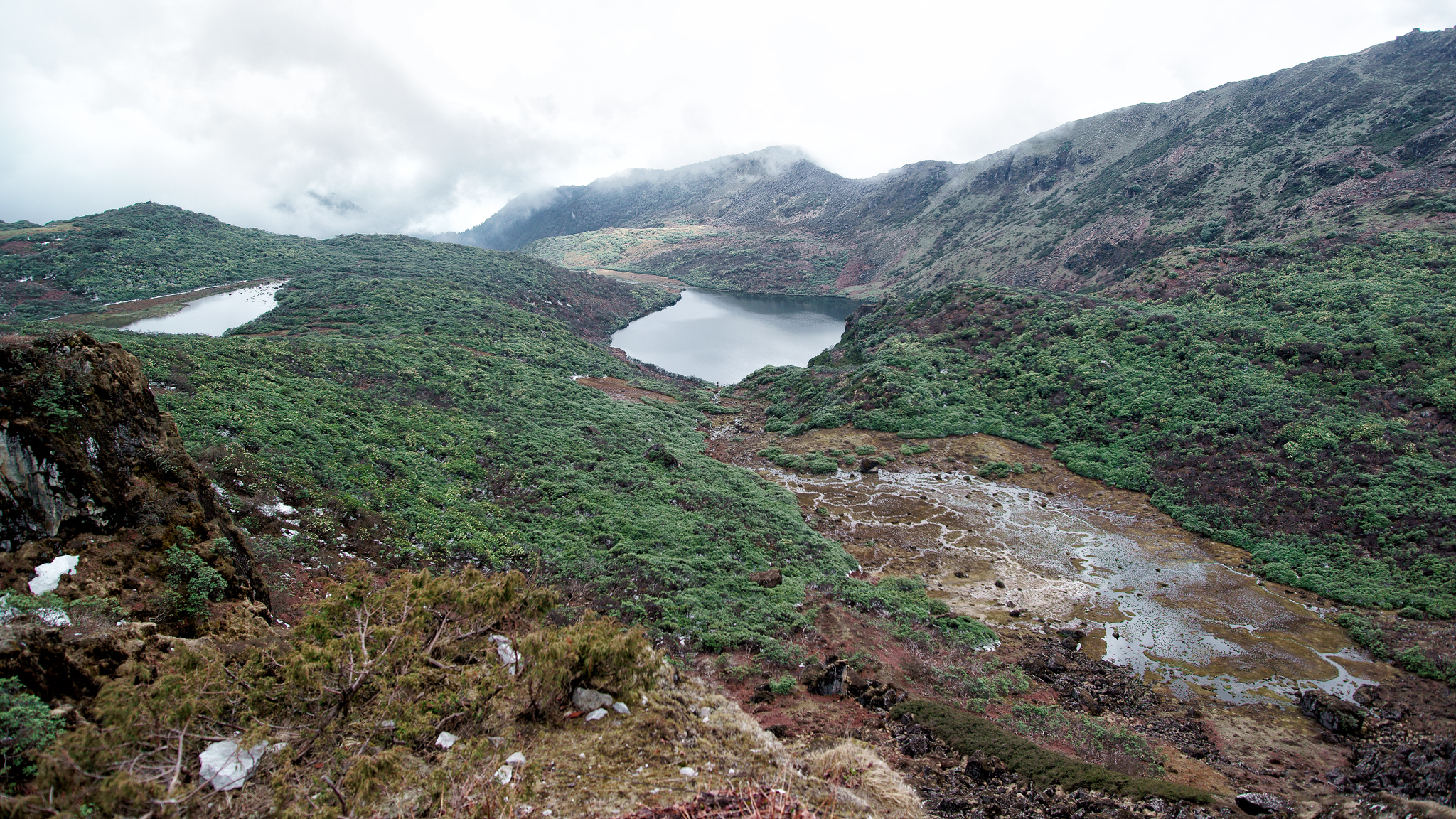 Pangateng Tso (popularly known as PT Tso) was the last lake we saw on our way back. Wangchu told me that on a clear day it looks blue as it reflects the clear blue sky. Nevertheless, I quite liked how it reflected the clouds and the trees on the other side.
Pangateng Tso (popularly known as PT Tso) was the last lake we saw on our way back. Wangchu told me that on a clear day it looks blue as it reflects the clear blue sky. Nevertheless, I quite liked how it reflected the clouds and the trees on the other side.
Tue, May 26 2015
It was about time to head back to Bomdila. However, we didn’t seem to recover from the ecstasy of our Bum La experience. We were all in awe of the “heavenly” experience and seemed to have completely forgotten about the arduous journey.
On our way back we stopped at an army camp in Baisakhi for lunch. The view from there took my breath away.
And we did go back to Nuranang Falls and got totally drenched. We were living our lives to the fullest.
Wed, May 27 2015
It was time to bid adieu to the land of dawn-lit mountains. On our way back to Assam we decided to check out Chilipum Monastery—a relatively new monastery recommended by the hotel staff in Bomdila as a must-see. Thanks to their recommendation what we saw was probably the most ornate and colorful monastery we have ever seen.
 And the view from the top was truly a gift.
And the view from the top was truly a gift.
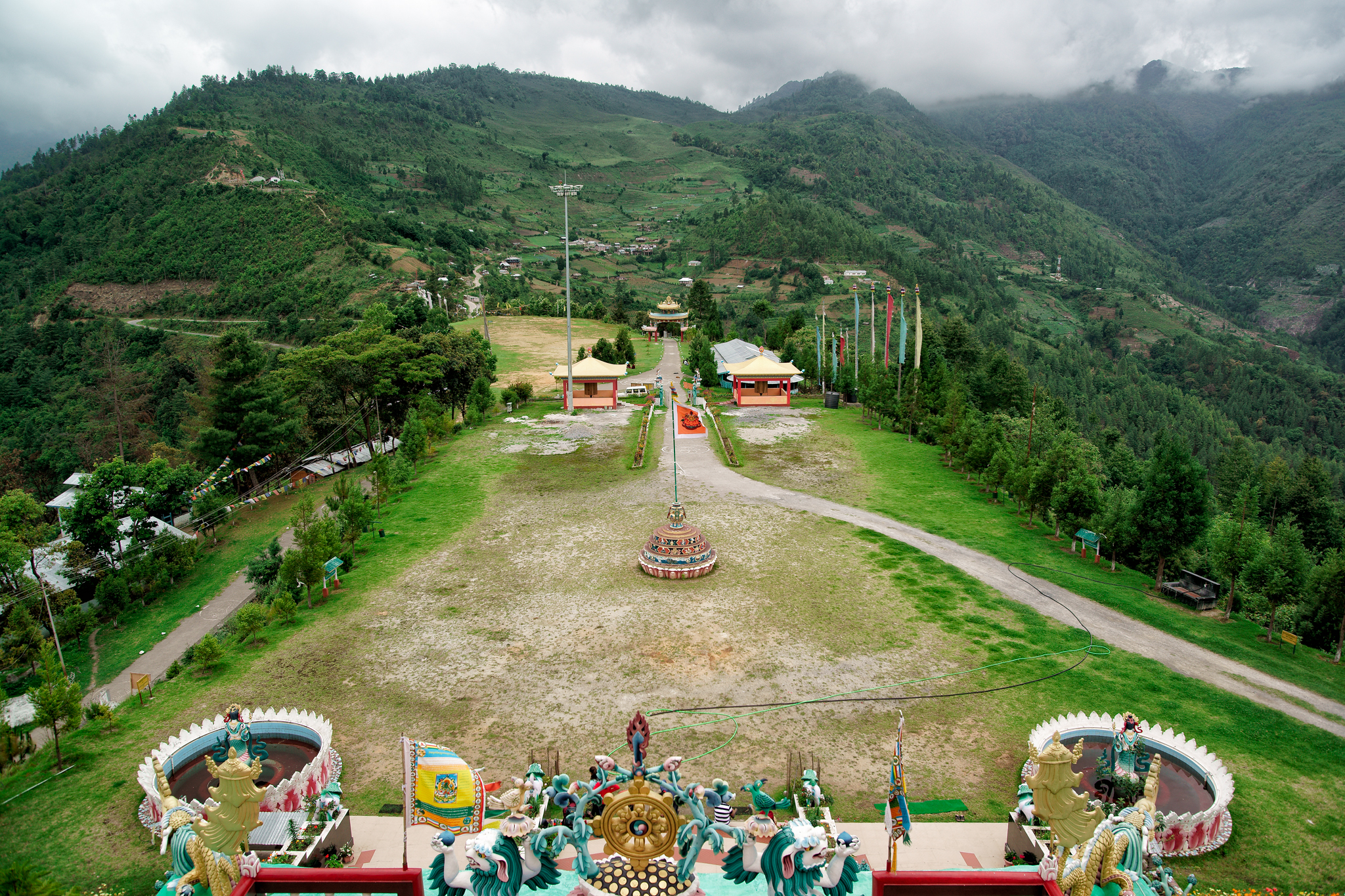 On our way back we drove through deep forests by the edges of Pakke Tiger Reserve. The look of the tropical forest was very similar to what we see in the Jurassic park movies. I made a mental note to come back to this place in the near future.
On our way back we drove through deep forests by the edges of Pakke Tiger Reserve. The look of the tropical forest was very similar to what we see in the Jurassic park movies. I made a mental note to come back to this place in the near future.
Thu, May 28 2015
Nameri Eco Camp in Nameri National Park, Assam was our last halt. Being a birding paradise the day was mostly spent watching birds or waiting for them to return to their nests. We also had a leisurely walk to the shore of Jia Bhoroli river, did some boating, and relished the food at the restaurant (the food at Tawang wasn’t much to write home about apart from the amazing Jalebis at an army camp made by a Punjabi army man).
Fri, May 29 2015
The day finally came to head back home. An adventurous, fun, mystical, and memorable journey was about to come to an end. We realized that it would be tough to get back to our city lives. However, the beautiful memories we created and nature’s gifts would continue to stay with us. We were heading back to the airport with a perpetual grin on our faces.
